50 Heirloom Potatoes and Old Fashioned Potato Varieties
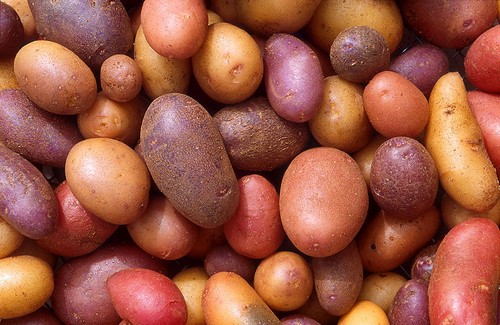
Heirloom Potatoes
Heirloom Potatoes and Ash-Leaved Early Variety
Stem nearly two feet in height, erect, with long, smooth, shining, and drooping foliage; flowers very seldom produced; tubers white, roundish, rough-skinned; flesh white, of medium quality. The potato variety is healthy, and remarkably early; well suited to open culture, but not adapted for growing under glass on account of its tall habit.Heirloom Potatoes and Ash-Leaved Kidney Variety
One of the earliest of the garden potato varieties, well adapted for forcing under glass or for starting in a hot-bed, and subsequent cultivation in the open ground. The plant is of spreading habit, and about eighteen inches in height; leaves small; tubers of medium size, kidney-shaped, white; flesh white, dry, and well flavored. Very healthy.Heirloom Potatoes and Biscuit Variety
Plant two and a half feet high, spreading; leaves rather rough, large, and of a pale-green color; flowers whitish; tubers rather small, round, smooth, and of a light-brownish color. A very healthy potato variety, mealy, well flavored, and quite productive. The plants do not decay, nor do the tubers attain full maturity until nearly the end of the season: the latter are, however, of good quality, and ready for the table soon after being harvested.Heirloom Potatoes and Black Chenango Variety
Plant vigorous, and generally of healthy habit; tubers nearly of the form of the Lady's Finger potato , but of larger size; skin very deep purple, or nearly black; flesh purple, both in its crude state and when cooked; quality good, usually dry, and of good flavor.The Black
Chenango potato
is moderately productive, and
withstands
disease
better than almost any other potato; but its dark color is not always
popular. Compared with many of the other varieties, it has
little
merit, and is not a profitable sort for extensive cultivation.
Heirloom Potatoes and Buckeye Variety
For planting for early use, it is a promising potato variety: but for a late or medium crop, upon strong, rich ground, it is said to grow so rapidly, and to so great a size, that many of the tubers are liable to be hollow-hearted; which considerably impairs their value for table use.
Heirloom Potatoes and Calico Variety
Similar to the Pink-eyed potato ; varying little except in color, which is mostly red, with occasional spots and splashes of white. It is in no respect superior to the last-named variety in quality, and cannot be considered of much value for agricultural purposes or for the table.Heirloom Potatoes and California Red Variety
A bright-red potato from California. Tubers variable in form, from long to nearly round, rather smooth; eyes slightly depressed.It is one of the most productive of all the potato varieties; but, on account of its extreme liability to disease, cannot be recommended for general cultivation.
Heirloom Potatoes and Carter Variety
A medium-sized, roundish, flattened, white potato, once esteemed the finest of all varieties, but at present nearly or quite superseded by the Jackson White, of which it is supposed to be the parent. Eyes rather numerous, and deeply sunk; flesh very white, remarkably dry, floury, and well flavored. Originated about thirty years ago, in Berkshire County, Mass., by Mr. John Carter.Heirloom Potatoes and Churchill Variety
A variety said to have originated in Maine, and often sold in the market for the "State of Maine;" which it somewhat resembles in size, form, and color. Flesh yellow. Not a desirable sort. It is much inferior to the "State of Maine;" and, in many places, the latter variety has been condemned in consequence of the Churchill having been ignorantly cultivated in its stead.Heirloom Potatoes and Cristy Variety
An early sort, of good quality, but rather unproductive. Shape somewhat long, though often nearly round; color white and purple, striped, and blended together. It is of no value as an agricultural variety; and, for table use, cannot be considered superior to many other varieties equally healthy and more prolific.Heirloom Potatoes and Cups Variety
Introduced. Plant upright, stocky, surviving till frost; flowers pale purple; tubers pink or reddish, large, oblong, often irregular; flesh dry and farinaceous. Very healthy and productive potatoes, but better suited for agricultural purposes than for the table.Heirloom Potatoes and Danvers Red Variety
Plant healthy and vigorous. The large, full-grown tubers are long; and the smaller, undeveloped ones, nearly round. Color light red, with faint streaks of white; eyes moderately sunk; quality fair.This potato variety originated in Danvers, Essex County, Mass.; and, when first introduced, was not only of good size and quality, but remarkably productive. It has, however, much deteriorated; and is now, both as respects quality and yield, scarcely above an average. At one period, it had the reputation of being one of the best varieties for keeping, and of entirely withstanding the attacks of the potato disease.
Heirloom Potatoes and Davis's Seedling Variety
The potato tubers are of good size, red, nearly round, though
sometimes more or
less flattened. Eyes deeply sunk, and not very numerous; flesh nearly
white, slightly tinged with pink beneath the skin when cooked; quality
good, being dry, farinaceous, and well flavored. It requires the full
season for its complete perfection, and resists disease better than
most
varieties.
As a winter potato, or for extensive cultivation for market, it is one of the best of all potato varieties; and commends itself to the farmer, both as respects quality and yield, as being greatly superior to the Peach-blow, Pink-eye, Vermont White, and many similar varieties, which so abound in city markets.
Heirloom Potatoes and Dykeman Variety
A potato plant of medium strength and vigor, rarely producing seed or blossoms; tubers large, roundish, often oblong; color white, clouded at the stem-end and about the eyes (which are moderately sunk and rather numerous) with purple; flesh white, or yellowish-white, its quality greatly affected by season, and the soil in which the variety may be cultivated. In certain descriptions of rather strong, clayey land, the yield is often remarkably great, and the quality much above medium.In such land, if warm and sheltered, the tubers attain a very large size quite early in the season, and find a ready sale in the market at greatly remunerative prices. Under other conditions, it frequently proves small, waxy, and inferior in quality, and profitless to the cultivator. Notwithstanding these defects, its size, earliness, and productiveness render it worthy of trial.
Heirloom Potatoes and Early Blue Variety
Potato tubers of medium size, roundish, of a bright purple or bluish color; eyes moderately deep; flesh, when cooked, white, or yellowish-white, mealy, and well flavored.This old and familiar potato variety is one of the earliest of the garden potatoes, of fine quality, and one of the best for forcing for early crops. It retains its freshness and flavor till late in the spring; is of comparatively healthy habit; and, though but moderately productive, is worthy more general cultivation.
Heirloom Potatoes and Early Cockney Variety
Plant of medium strength and vigor, recumbent, rarely blossoming, and usually ripening and decaying early in the season, or before the occurrence of frost; tubers white, large, roundish, rough; flesh yellowish-white, or nearly white, dry, farinaceous, and of good flavor; hardy, moderately productive, and recommended as a desirable intermediate variety for the garden or for field culture. Introduced.Heirloom Potatoes and Early Manly Variety
Plant medium or small, rarely blossoming, and decaying early in the season; tubers of medium size, white, roundish; flesh yellowish-white, dry, mealy, and mild flavored. It yields well, and is a good variety for early garden culture. Introduced.Heirloom Potatoes and Flour-Ball Variety
Plant reclining, of rather slender habit, rarely blossoming; tubers of medium size, white, round, the skin quite rough or netted; flesh white, dry, farinaceous, and mild flavored. It yields abundantly, and is a good sort for the garden; but would prove less profitable for growing for the market than many other varieties of larger size.Heirloom Potatoes and Fluke Kidney Variety
Plant vigorous, with luxuriant, deep-green foliage; continuing its growth till late in the season, or until destroyed by frost. The tuber is remarkable for its singular shape, of a flattened oval, frequently measuring eight or nine inches in length by nearly three inches in width.The potato peel is thin, and remarkably free from eyes; the surface, very smooth and even; the flesh is very dry, mealy, and farinaceous, exceedingly well flavored, and, in general excellence, surpassed by few, if any, of the late varieties. It is also healthy, hardy, and very productive; but is much better towards spring than when used soon after being harvested.
This potato variety originated near Manchester, Eng., about the year 1844; and appears to be a cross or hybrid between the Lapstone Kidney potato and Pink-eye potato .
In this country, the variety has never reached the degree of excellence it appears to have attained in England. With us the yield has been small, and it has suffered greatly from disease. The flesh is also yellow when cooked, and quite strong flavored. Not recommended for cultivation.
Heirloom Potatoes and Forty-Fold Variety
An English potato variety. Plant healthy, ripening about the middle of September, rarely producing seed or blossoms; tubers white, of medium size, round; skin rough or netted; flesh white, comparatively dry, and well flavored. It yields abundantly; is a good kind for forcing; and, though the plants remain green until frost, the tubers attain a suitable size for use quite early in the season. An English sort, known as Taylor's Forty-Fold potato, is quite distinct; the tubers being oval, much flattened, and of a reddish color.Heirloom Potatoes and Garnet Chili Variety
Stem not long or tall, rather erect, sturdy, and branching; flowers abundant, pale purplish-white, and usually abortive; tubers red, or garnet-colored, very large, roundish, and comparatively smooth and regular; flesh white, dry, mealy, and, the size of the tuber considered, remarkably well flavored. The variety is healthy, yields abundantly, is greatly superior to the Peach-blow potato and kindred sorts for table use, and might be profitably grown for farm-purposes. The plants survive till destroyed by frost.Heirloom Potatoes and Gillyflower Variety
Tubers large, oval, or oblong, flattened, white, and comparatively smooth; flesh white, dry, and of fair quality. The plants are healthy, and the variety is very productive: but it is inferior to many others for table use; though its uniform good size, and its fair form, and whiteness, make it attractive and salable in the market. It is similar to, if not identical with, the St. Helena potato and the Laplander potato.Heirloom Potatoes and Green-Top Variety
Plant strong and vigorous; flowers dull white, generally abortive; tubers quite large, white, roundish, often irregular; eyes deep-set; flesh white, comparatively dry, and well flavored. The potato variety is productive, and of healthy, hardy habit; not early; the plants continuing green till destroyed by frost. Introduced.Heirloom Potatoes and Hill's Early Variety
An old potato variety, very little, if at all, earlier than the White Chenango potato. Quality not much above mediocrity; its chief recommendation being its earliness. Skin and flesh yellowish-white; eyes rather deeply sunk; size medium; form roundish; moderately productive. It does not ordinarily cook dry and mealy; and, though desirable as an early potato for a limited space in the garden, cannot be recommended for general cultivation.Heirloom Potatoes and Irish Cups Variety
Tubers nearly round, yellowish-white; eyes deep-set; flesh yellow, and strong flavored when cooked. Unfit for table use.Aside from the difference in form, the variety somewhat resembles the Rohan potato.
Heirloom Potatoes and Jackson White Variety
This excellent variety originated in Maine; and is supposed to be a seedling from the celebrated Carter potato, which it much resembles. Tubers yellowish-white, varying in size from medium to large; form somewhat irregular, but generally roundish, though sometimes oblong and a little flattened; eyes rather numerous, and deeply sunk; flesh perfectly white when cooked, remarkably dry, mealy, farinaceous, and well flavored.The variety unquestionably attains its greatest perfection when grown in Maine, or the northern sections of Vermont and New Hampshire; but is nevertheless of good quality when raised in the warmer localities of New England and the Middle States.
It is earlier than the Davis Seedling; comparatively free from disease; a good keeper; commands the highest market-price; and, every thing considered, must be classed as one of the best, and recommended for general cultivation.
The plants are very erect, the flowers nearly white; and the balls, or berries, are produced in remarkable abundance.
Heirloom Potatoes and Jenny Lind Variety
A potato variety of comparatively recent introduction. Plant very strong and vigorous; tubers of extraordinary size when grown in strong soils, long and somewhat irregular in form, thickly set on the surface with small knobs, or protuberances, above which the eyes are placed in rather deep basins, or depressions; color red and white intermixed, in some specimens mostly red, while in others white is the prevailing color; flesh yellow when cooked, and quite coarse, but esteemed by many as of good quality for table use.One of the largest of all the varieties, remarkably productive, quite free from disease, keeps well, and, as an agricultural potato, rivals the Rohan potato. Requires the full season. It sports more than any potato; being exceedingly variable in size, form, and color.
Heirloom Potatoes and Lady's Finger Variety
Stem from one foot and a half to two feet high, of straggling habit of growth; leaves smooth, and of a light-green color; blossoms rarely if ever produced; tubers white, smooth, long, and slender, and of nearly the same diameter throughout; eyes very numerous, and slightly depressed.A very old variety, of pretty appearance, long cultivated, and much esteemed as a baking potato; its peculiar form being remarkably well adapted for the purpose. It is, however, very liable to disease; and as many of the recently introduced seedlings are quite as good for baking, as well as far more hardy and productive, it cannot now be considered as a variety to be recommended for general culture.
Heirloom Potatoes and Nichol's Early Variety
A variety of English origin. M'Intosh describes it as being "decidedly the best kidney potato grown, and an excellent cropper. Tubers sometimes seven inches in length, and three inches in breadth. It is longer in coming through the ground in spring than most other varieties, and the stems at first appear weakly; but they soon lose this appearance, and grow most vigorously. It is a first-rate potato in August and September; and will keep in excellent condition till May following, without losing either its mealiness or flavor."Heirloom Potatoes and Long Red Variety
Form long, often somewhat flattened,—its general appearance being not unlike that of the Jenny Lind potato, though of smaller size; color red; flesh marbled or clouded with red while crude, but, when cooked, becoming nearly white. The stem-end is often soggy, and unfit for use; and the numerous prongs and knobs which are often put forth on the sides of the tubers greatly impair their value for the table.A few years since, this variety was exceedingly abundant in the market, and was esteemed one of the best sorts for use late in spring and early in summer. It was also remarkably healthy and very productive, and was considered one of the most valuable kinds for general cultivation. It has somewhat improved in quality by age, although not now to be classed as a potato of first quality. The Jenny Lind and other varieties are now rapidly superseding it in most localities.
Heirloom Potatoes and Mexican Variety
A very handsome white variety, long and smooth, like the St. Helena, but not quite so large; eyes very slightly depressed. It is of poor quality, quite unproductive, rots badly, and not worthy of cultivation.Heirloom Potatoes and Nova-Scotia Blue Variety
This old variety, at one period, was very extensively cultivated, and for many years was considered the most profitable of all the sorts for raising for market or for family use. Form nearly round, the larger specimens often somewhat flattened; color light blue; eyes moderately depressed; flesh white, dry, and good. It yields abundantly; but, in consequence of its great liability to disease, its cultivation is now nearly abandoned.Heirloom Potatoes and Old Kidney Variety
Tubers kidney-shaped, white; flesh yellow, rather waxy, and of indifferent flavor.It is neither very productive, nor very valuable in other respects; and it is now little cultivated.
Heirloom Potatoes and Peach-Blow Variety
Tubers similar in form to the Davis Seedling potato, but rather more smooth and regular; color red, the eyes not deeply sunk; flesh yellow when cooked, dry and mealy, but only of medium quality, on account of its comparatively strong flavor.It is hardy and quite productive; keeps well; and is extensively cultivated for market in the northern parts of New England and the State of New York, as well as in the Canadas. It is common to the markets of most of the large seaport cities; and, during the winter and spring, is shipped in large quantities to the interior and more southern sections of the United States. The Davis Seedling—which is quite as productive, and much superior in quality for table use—might be profitably grown as a substitute.
Heirloom Potatoes and Pink-Eyed Variety
Tubers nearly round; eyes rather large and deep; color mostly white, with spots and splashes of pink, particularly about the eyes; flesh yellow.The Pink-eyed is an old but inferior variety, hardly superior in quality to the Vermont White. Though quite productive, it is generally esteemed unworthy of cultivation.
Heirloom Potatoes and Poggy, or Porgee Variety
A dark-colored variety, extensively cultivated in the British Provinces, particularly in Nova Scotia; and, during the autumn, imported in considerable quantities into the principal seaports of the United States. It is of excellent quality, and by some preferred to all others, especially for baking; for which purpose, on account of its size and remarkable form, it seems peculiarly adapted. It is moderately productive, and succeeds well if seed is procured every year or two from the East; but, if otherwise, it soon deteriorates, even under good cultivation.Size above medium; form long, broadest, and somewhat flattened, at the stem-end, and tapering towards the opposite extremity, which is often more or less sharply pointed. It is also frequently bent, or curved; whence the name "Cow-horn potato," in some localities. Skin smooth; eyes not depressed; color dark-blue outside, white within when cooked. Not very hardy; requiring a full season for its complete perfection. Unless where well known, its color is objectionable; and it is generally less salable than the white-skinned varieties.
Heirloom Potatoes and Quarry Variety
A large, white, roundish, English potato, not unlike the variety universally known and cultivated many years since in this country as the Orange Potato. Plant vigorous, and of strong, stocky habit; flowers purple, generally abortive; flesh yellowish-white, of fair quality for table use. A hardy, very productive sort, which might be profitably grown for marketing and for agricultural purposes. The plants survive till frost. Not early.Heirloom Potatoes and Rohan Variety
Tubers very large, in form much resembling the Jenny Lind potato,—the full-developed specimens being long, and the smaller or immature tubers nearly round; eyes numerous and deep-set; color yellowish-white, with clouds or patches of pink or rose; flesh greenish-white when cooked, yellowish, watery, and strong flavored. The plant is strong and vigorous, and continues its growth till destroyed by frost. The flowers are generally abortive.Mr. Hyde describes it as a variety famous in history, but infamous as a table potato, and fit only for stock. It formerly gave an immense yield, but now produces only moderate crops; and its cultivation is nearly abandoned.
Heirloom Potatoes and Shaw's Early Variety
An English potato variety, much employed for forcing, and extensively cultivated in the vicinity of London for early marketing. It is, for an early sort, a large, beautiful, oblong, white-skinned potato. Its only fault is its hollow eyes. It is very productive.Heirloom Potatoes and State of Maine Variety
This potato variety, as implied by its name, is of Maine origin, and was introduced to general notice six or seven years ago. In form, the tubers are similar to the White Chenango potato, being long, smooth, and somewhat flattened; though the smaller and undeveloped bulbs are often nearly round. Eyes almost even with the surface, and quite numerous; color white, like the Jackson Whitepotato. When cooked, the flesh is white, very dry, mealy, and of good flavor.It is quite early, but more liable to disease than the Davis Seedling and some other varieties. In Maine it is grown in great perfection, nearly equaling the Jackson White and Carter as a table potato. On light soil, it is only moderately productive; but on strong land, in high cultivation, yields abundantly.
Heirloom Potatoes and St. Helena Variety
An old and very productive potato variety. Plant erect, and of a bushy habit, about two feet and a half in height; foliage light green; flowers pale reddish-purple. The tubers are of an oblong form, and remarkably large; specimens having been produced measuring ten inches in length. Eyes numerous, but not deeply set; skin white and smooth; flesh white when cooked, mealy, and of fair quality.It is a very healthy potato variety, and not easily affected by disease; but belongs to that class of late field potatoes, the foliage of which does not in ordinary seasons decay until injured by frost, and the tubers of which generally require to be kept some time before they are fit for using to the greatest advantage.
Heirloom Potatoes and Taylor's Forty-Fold Variety
Plant about one foot and a half high, slender, and spreading in habit; foliage light green; flowers very rarely produced; tubers oval, much flattened, and of medium size; skin rough, and of a dull, reddish color. This potato variety is very dry and starchy, well flavored, and suffers comparatively little from disease. It is also very productive, and a good early sort for the garden; but not well adapted for field culture, or for cultivation for agricultural purposes.Heirloom Potatoes and Tolon Variety
Plant quite low and dwarf, decaying with the season; flowers lilac-purple, large and handsome, generally abortive; tubers of medium size, roundish, of a pink or reddish color; flesh yellow, dry, but not of so mild a flavor as many of the more recent kinds. Moderately productive. Introduced.Heirloom Potatoes and Vermont White Variety
A very fair and good-sized but poor variety, grown to a considerable extent in the northern and more interior portions of New England. Color white outside; but the flesh, when cooked, is yellow, soft, not dry, and strong flavored. It is a strong grower, and very productive, but rots badly. It commands only a low price in the market, on account of its very inferior quality; and cannot be recommended for general cultivation.Heirloom Potatoes and Veto, or Abington Blue Variety
Tubers long, resembling in form those of the Long Red, and, like that variety, often watery at the stem-end after being cooked; color blue or purplish; flesh white; quality fair as a table potato.This potato variety originally was remarkably productive, and at one period was in very general cultivation; but now is rarely planted, as it is extremely liable to disease, and rots badly.
Heirloom Potatoes and White Chenango Variety
An old and familiar potato variety; at one period almost everywhere known, and generally acknowledged as the best of all varieties. As a potato for early planting, whether for family use or for the market, it was a general favorite; but, within a few years past, it has not only greatly deteriorated in quality and productiveness, but has been peculiarly liable to disease and premature decay of the plants.When well grown, the tubers are of good size, rather long, slightly flattened, and comparatively smooth; eyes slightly sunk; color white, with blotches of purple,—before cooking, somewhat purple under the skin; flesh, when cooked, often stained with pale purple; in its crude state, zoned with bright purple. Quality good; dry, mealy, and well flavored.
The variety is considerably affected by the soil in which it may be cultivated; in some localities, being much more colored than in others. It is now rapidly giving place to new seedling varieties, quite as good in quality, and more healthy and productive.Heirloom Potatoes and White Cups Variety
Tubers long and flattened, somewhat irregular; eyes deeply sunk; skin yellowish; flesh white.It is a very handsome potato variety, of Maine origin, but is only moderately productive. It is also of ordinary quality, rots easily, and will probably never become popular.
Heirloom Potatoes and White Mountain Variety
Tubers large, long, white, smooth, uniformly fair and perfect. Appears to be nearly identical with the St. Helena potato and Laplander potato. It is very productive, and a good agricultural variety; but, for table use, can be considered only of second quality.Heirloom Potatoes and Worcester Seedling Variety
Tubers of a pinkish-white color, and similar in form to the Jackson Whitepotato. Eyes deep-set; flesh white, more so than that of the Davis Seedling potato. It keeps well, and is an excellent variety for cultivation for family use, but less profitable than many others for the market. Stalks upright; blossoms pinkish, but not abundant.In quality, this comparatively old and well-known variety is nearly or quite equal to the Carter potato; and, besides, is much more productive. As a garden potato, it deserves general cultivation. Requires the full season.
If you are interested in planting some rare seeds of your own, and are looking for a seed bank near you in the USA. Then take a look at this site on rare seeds and locations of where to find them. Do your bit for the environment in your own small way by saying no to commercial seeds and yes to open-pollinated heirloom seeds.
You can Add your Own Comments and Pages on Heirloom Potatoes!
We have lots of pages where you can contribute to throughout this homesteading website. We love hearing from our readers, and hope you will be one of those we hear from too. Look around our homesteading website. If you have any comments or questions, please feel free to contact us.
Leave a Comment
Do you have anything that you would like to add after reading this page? We would love to hear your thoughts. If you can add additional information to what has been written here you will be adding value to the website! No need to have any special skills - just type and submit. We will do the rest!
Other Comments
Click below to see comments from other visitors to this page...
Origin of the name Jackson White Potato 




Can you please tell me of the Origin of the Jackson White Potato, Besides originating in Maine, do you know how it got it's name or the Year?
…
Looking for an heirloom spud - Elkhorn Potatoes Not rated yet
I am in search of a potato that we grew in Quebec back in the 70's. I was given a few seed potatoes and built up my crop. They we very heirloomy even …



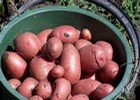
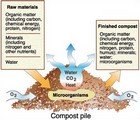


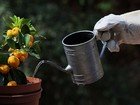
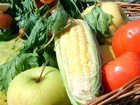
New! Comments
Do you have something of value to add? Leave me a comment in the box below.